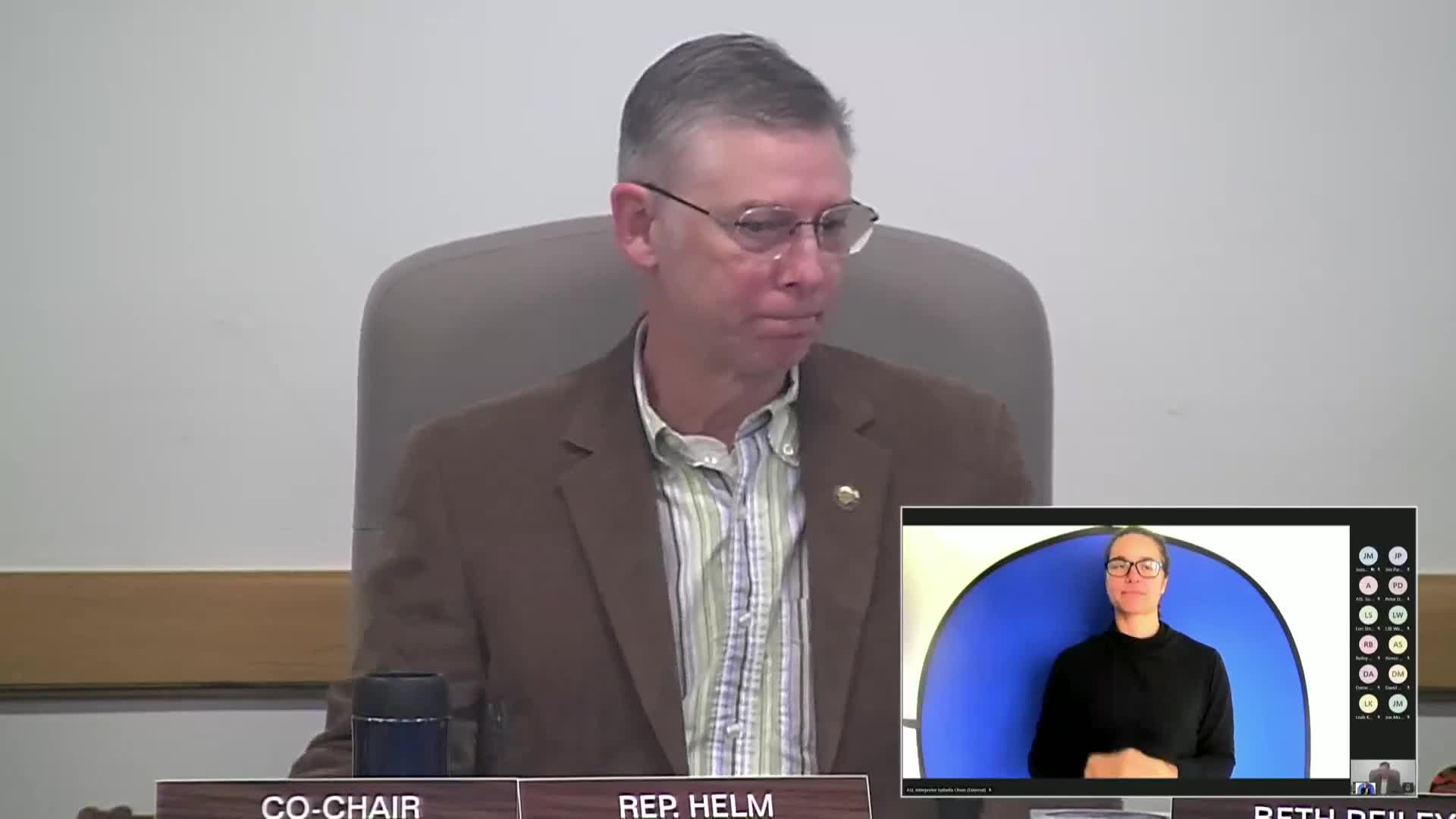Committee hears progress report on Oregon Water Data Portal pilot; staff say long-term governance and funding needed
February 26, 2025 | Agriculture, Land Use, Natural Resources, and Water, House of Representatives, Committees, Legislative, Oregon
This article was created by AI summarizing key points discussed. AI makes mistakes, so for full details and context, please refer to the video of the full meeting. Please report any errors so we can fix them. Report an error »

Co-Chair Helm opened a public hearing on House Bill 3106. Riley (staff member) summarized the bill language in the dash-1 amendment: the measure would create an Integrated Water Data Team, an Integrated Water Data Portal, and an Integrated Water Data Account and appropriate funds from the General Fund to the Department of Environmental Quality (DEQ) to support the portal.
Jennifer Weigel, water quality administrator at DEQ, led the agency presentation and said the portal effort is a cooperative, multi-agency project to give the public and water managers a single point of access to water-related datasets now scattered across state, local and federal systems. Weigel said the pilot portal has been developed with technical partners and that the project identified more than 500 candidate datasets across the state enterprise; the pilot currently integrates seed datasets representing a range of types, including in-stream water concentration data and water rights information.
Courtney Schaff (Oregon Watershed Enhancement Board, monitoring and reporting manager) and Doug Woodcock (Oregon Water Resources Department deputy director) described the technical phases: a 2022--2023 scoping and inventory phase and a biennial pilot-development phase that produced a public beta. Woodcock told the committee the project organized interagency working groups, performed a data-inventory and needs assessment, and identified technical constraints: many critical datasets are not in interoperable formats or are not digitized, and integration requires technical connectors (APIs or equivalents) and agency-level preparation.
Lillian Watson of the Internet of Water Coalition described cross-state experience, noting that Texas and New Mexico launched hubs with state leadership and mixed funding sources; Oregon's portal began in 2021, received planning funding and later biennial funding for a pilot that now hosts an initial set of 39 datasets from eight organizations. Presenters repeatedly stressed that quality assurance and quality control (QA/QC) happen at the data originator (the agency that produces a dataset), and that the portal will federate data from multiple sources rather than host everything centrally.
Speakers, including Harmony Burright (chief of staff, water caucus), said the dash-1 amendment attempts to create a durable governance and funding structure, clarify institutional responsibility, and provide a process for prioritizing which datasets agencies prepare and contribute. Committee members asked about QA/QC, software checks, points of review, agency responsibilities, and the portal's role in enabling local, watershed-level use. Local practitioner Peter Donovan urged organizing data by watershed and local curation to make the portal more useful for local planning.
Presenters warned that continued progress will require sustained resourcing, a clear project lead in the executive branch, interagency coordination, and attention to the human (coordination) as well as technical challenges. The committee took questions; no formal action was recorded during the hearing.
Jennifer Weigel, water quality administrator at DEQ, led the agency presentation and said the portal effort is a cooperative, multi-agency project to give the public and water managers a single point of access to water-related datasets now scattered across state, local and federal systems. Weigel said the pilot portal has been developed with technical partners and that the project identified more than 500 candidate datasets across the state enterprise; the pilot currently integrates seed datasets representing a range of types, including in-stream water concentration data and water rights information.
Courtney Schaff (Oregon Watershed Enhancement Board, monitoring and reporting manager) and Doug Woodcock (Oregon Water Resources Department deputy director) described the technical phases: a 2022--2023 scoping and inventory phase and a biennial pilot-development phase that produced a public beta. Woodcock told the committee the project organized interagency working groups, performed a data-inventory and needs assessment, and identified technical constraints: many critical datasets are not in interoperable formats or are not digitized, and integration requires technical connectors (APIs or equivalents) and agency-level preparation.
Lillian Watson of the Internet of Water Coalition described cross-state experience, noting that Texas and New Mexico launched hubs with state leadership and mixed funding sources; Oregon's portal began in 2021, received planning funding and later biennial funding for a pilot that now hosts an initial set of 39 datasets from eight organizations. Presenters repeatedly stressed that quality assurance and quality control (QA/QC) happen at the data originator (the agency that produces a dataset), and that the portal will federate data from multiple sources rather than host everything centrally.
Speakers, including Harmony Burright (chief of staff, water caucus), said the dash-1 amendment attempts to create a durable governance and funding structure, clarify institutional responsibility, and provide a process for prioritizing which datasets agencies prepare and contribute. Committee members asked about QA/QC, software checks, points of review, agency responsibilities, and the portal's role in enabling local, watershed-level use. Local practitioner Peter Donovan urged organizing data by watershed and local curation to make the portal more useful for local planning.
Presenters warned that continued progress will require sustained resourcing, a clear project lead in the executive branch, interagency coordination, and attention to the human (coordination) as well as technical challenges. The committee took questions; no formal action was recorded during the hearing.
View full meeting
This article is based on a recent meeting—watch the full video and explore the complete transcript for deeper insights into the discussion.
View full meeting
